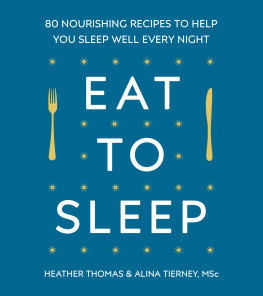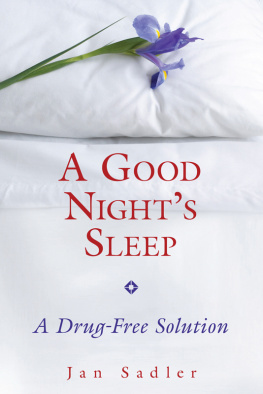HarperCollinsPublishers
1 London Bridge Street
London SE1 9GF
www.harpercollins.co.uk
HarperCollinsPublishers
1st Floor, Watermarque Building, Ringsend Road
Dublin 4, Ireland
First published by HarperCollinsPublishers 2022
FIRST EDITION
HarperCollins Publishers 2022
Cover layout design by Sim Greenaway HarperCollinsPublishers 2022
Cover photograph Shutterstock.com
A catalogue record of this book is available from the British Library
Nikki Girvan asserts the moral right to be identified as the author of this work
All rights reserved under International and Pan-American Copyright Conventions. By payment of the required fees, you have been granted the nonexclusive, non-transferable right to access and read the text of this e-book on screen. No part of this text may be reproduced, transmitted, downloaded, decompiled, reverse engineered, or stored in or introduced into any information storage retrieval system, in any form or by any means, whether electronic or mechanical, now known or hereinafter invented, without the express written permission of HarperCollins e-books.
Find out about HarperCollins and the environment at
www.harpercollins.co.uk/green
Source ISBN: 9780008498351
Ebook Edition January 2022 ISBN: 9780008498368
Version: 2021-12-02
This ebook contains the following accessibility features which, if supported by your device, can be accessed via your ereader/accessibility settings:
- Change of font size and line height
- Change of background and font colours
- Change of font
- Change justification
- Text to speech
- Page numbers taken from the following print edition: ISBN 9780008498351
For all the activists, artists, scientists and everyday folk who make the world a better place and those who tell their stories. This book wouldnt exist without you. Keep spreading joy, hope and inspiration and shining a light in the dark.
In this modern world, it can feel like a good nights sleep is hard to come by. Even when we retreat to the private and intimate sanctuary of our bedrooms, we take with us blue-lit windows onto tragedy, devastation and destruction that unfold every single day, all around the world.
Hardwired to recognise threats to our existence, doomscrolling late into the night has become a dangerous collective pastime, one that plays havoc with our circadian rhythms the 24-hour cycles that are part of our bodys internal clock and essential to our health and wellbeing raising levels of stress hormones such as cortisol and rendering a good nights sleep nigh on impossible.
And its not just bad news that keeps us up at night. The ease with which our thumbs habitually guide us from news apps to social media feeds, work emails to text messages and arguably the most disruptive creation of all family WhatsApp groups, at the very time we most want to relax is disconcerting to say the least. Thankfully, with practice, habits can be broken and the solution is already in your hands.
The benefits of reading any book before bedtime have long been extolled by experts according to research from the University of Sussex just six minutes of reading can reduce stress levels by 68 per cent. This book gently encourages you to spend those daily few minutes (or more) focusing on the positive goings-on in the world, because they do exist. This is a helpful, hopeful reminder that only when we look up from the distress displayed on our devices will we notice the positive steps being taken together too.
From environmental advances such as military bases being transformed into wildlife sanctuaries and smart tech firms saving the worlds honeybees, to extraordinary people volunteering their time to set up charities and helplines to lend a helping hand, there are acts of kindness and constant improvements being made in this world all the time. We just need to set aside a few minutes to acknowledge them.
This book is a salve for anxious minds. They might not have made the headlines, but every story within these pages is true. The hope is that you will find comfort in your new nightly habit and instead of the heaviness experienced after a dose of doom, you will start to feel a little lighter before turning out the light. So disconnect, dip in and drift away into these bite-sized tales of hope and wake up refreshed to take on the world anew.
Once no-go military zones at the height of the Cold War, sites along the border of the former Iron Curtain in Germany have been given a new lease of life. Some 62 former military bases, which once served as defences between East and West Germany during four decades of conflict, are now home to eagles, woodpeckers, bats, beetles and more, after the government decided to convert the unused sites into nature reserves, with some parts also open for public use.
Collectively, the sites cover 31,000 hectares (120 square miles) the equivalent of 310,000 Olympic-sized swimming pools and contain a diverse array of meadows, forests and marshes the perfect environment for rare flora and fauna to thrive. The transformation has increased the total area dedicated to protected wildlife in Germany by a quarter. More than 30 years on from the reunification of the country, the land running along what was once referred to as the death strip owing to the many lives lost by those trying to cross the border is now teeming with life and hope.

Far from just being humble producers of honey, bees are responsible for a third of the food we eat, spreading pollen from flower to flower and triggering the growth mechanism that creates fruits, vegetables, nuts and seeds. Although the threats of pests, parasites and climate change have had a detrimental effect on the population of honeybees, they are now finding an unexpected saviour in smart tech.
An Irish company called ApisProtect (apis meaning bee in Latin) has developed sensors that can be placed under the roof of a beehive to monitor factors including temperature, humidity, sound and movement. Data from more than 400 smart sensor units, installed in hives managed by 20 commercial beekeepers across the US, Ireland, the UK and South Africa, is now transferred via the cloud to ApisProtects headquarters in Cork. After being processed and analysed, actionable insights are sent back to the beekeepers, giving them a better understanding of bee health and productivity, allowing them to prevent problems such as changes in temperature or humidity, before they take hold.
Although a leader in their field, monitoring over 20 million honeybees, ApisProtect is not alone in using smart tech to help create larger, healthier colonies of bees. The Austrian HIVEOPOLIS research project (beehives of the future) has developed a dance robot bee, which is able to direct forager bees towards nectar or pollen sources and away from areas affected by dangerous pesticides, while Bulgarian Pollenitys Beebot is a personal intercom for hobbyist beekeepers smart hives, which records changes in temperature and humidity and performs acoustic analysis every 15 minutes.
Smart tech is now officially the bees knees.

















